Bitcoin explained simply. What Is Bitcoin? How Does It Work?
In this article, you will learn everything about BTC. Let’s explain how virtual money works?
What is bitcoin?
Bitcoin is a digital and global monetary system, a cryptocurrency. It allows people to send or receive money over the Internet, even from people they don’t know or trust. This is the first technology of its kind that allows the transfer of a digital asset over the Internet without the intervention of a third party.
Digital money can be exchanged without being tied to a real person. The mathematical field of cryptography is the backbone of Bitcoin security.
Bitcoin is an electronic currency that exists only in the virtual space of the Internet. Also often used is the abbreviation BTC, which is the monetary unit in the Bitcoin system, for which there is a limited supply of 21 million coins1.

Bitcoin is the oldest and leading cryptocurrency in the world. The term bitcoin consists of the English words “bit” (digital unit) and “coin” (coin) and means a digital coin. Unlike traditional currencies, BTC does not depend on states and banks.
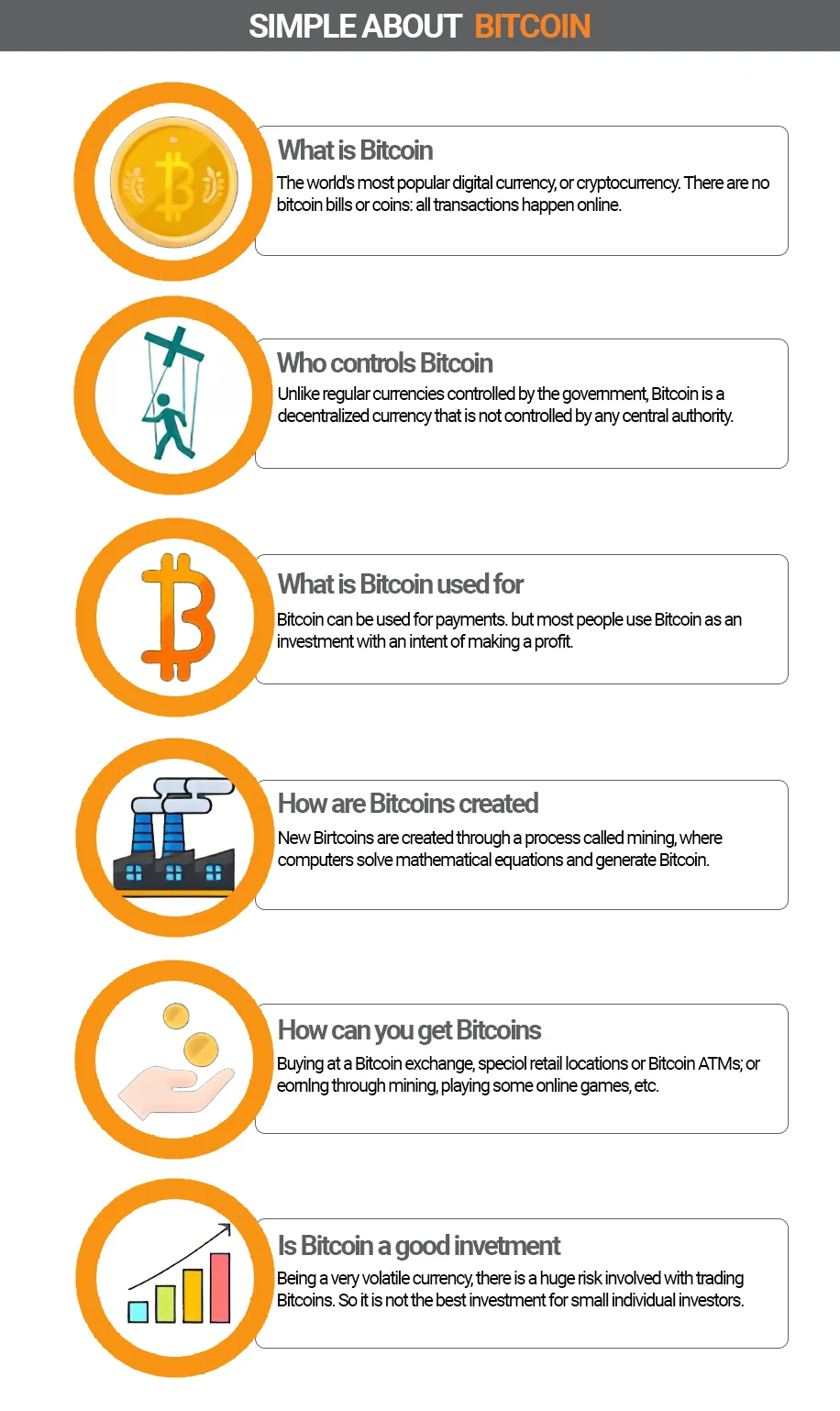
To better understand BTC technology, it is important to understand the basic terms.
Important terms and clear explanations
- bitcoin
- Digital money designed for decentralized payments, that is, transactions without intermediaries such as banks.
- Blockchain
- Digital chain of records (blocks). Records of bitcoin payments are stored in each block (blockchain).
- Cryptocurrency
- Bitcoin is also called a cryptocurrency. The Bitcoin payment system uses cryptographic methods to store the information it contains. Cryptography comes from Greek and means secret writing.
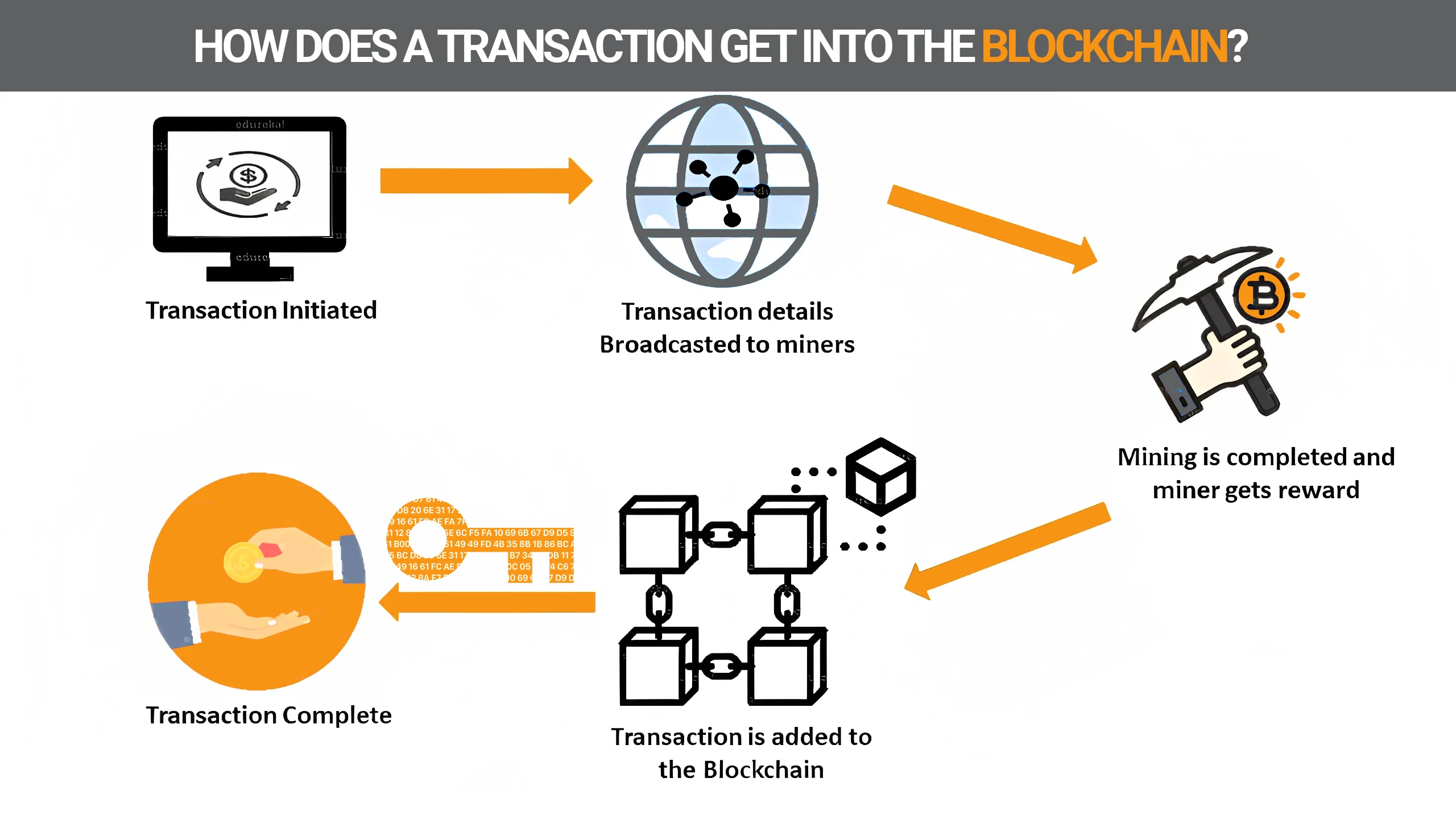
- Miner
- A member of the Bitcoin network that validates payments and computes new blocks on its hardware.
- Mining
- The English term “mining” means to dig, mine. When miners confirm payments, they receive new bitcoins as a reward. To add a new block to the blockchain, they need to transfer information from the old blocks to the new one with the appropriate ciphers. This requires computing power and huge amounts of electricity.[21].
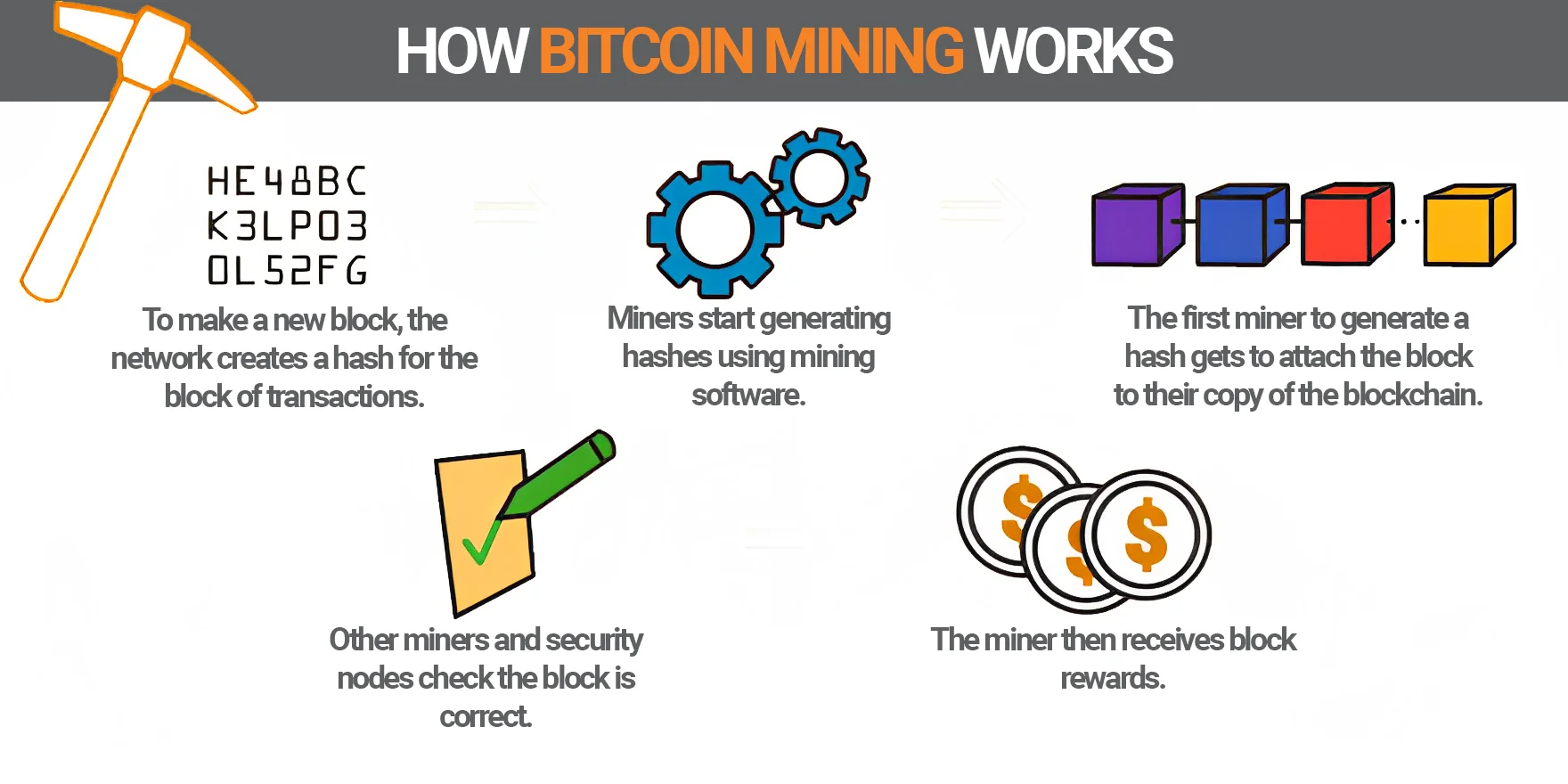
Too hard? Simple explanation:
Bitcoin is money. It has value. It is also similar to stocks because its value fluctuates based on supply and demand.
Can I touch a Bitcoin? No, BTC is like the money you have available at banks and credit cards. Money moves from one place to another without even touching human hands.
Who makes crypto coins? To get BTC, you must first mine it. It’s like in a gold mine, only the miners are programs on the Internet.
How can I see how many coins I have? Nobody can see what you have , spend or receive, but the system itself (blockchain) keeps track of the balances. It’s like a big ledger.
How do you store BTC then? In a digital wallet. It’s like an app on your smartphone. Only instead of credit card numbers you have a digital access key. You can evenwrite down these keys and store them in your real wallet.
At first glance, it seems that BTC is different from ordinary money, but in fact there are many similarities. It’s just that bitcoin is more modern and functional than debit cards.
Bitcoin is a digital currency that uses blockchain technology to ensure its security.
Blockchain
Physically, there is no cryptocurrency, there are only special registries that track how many bitcoins someone has and who transfers them to where. These registries are called blockchains.
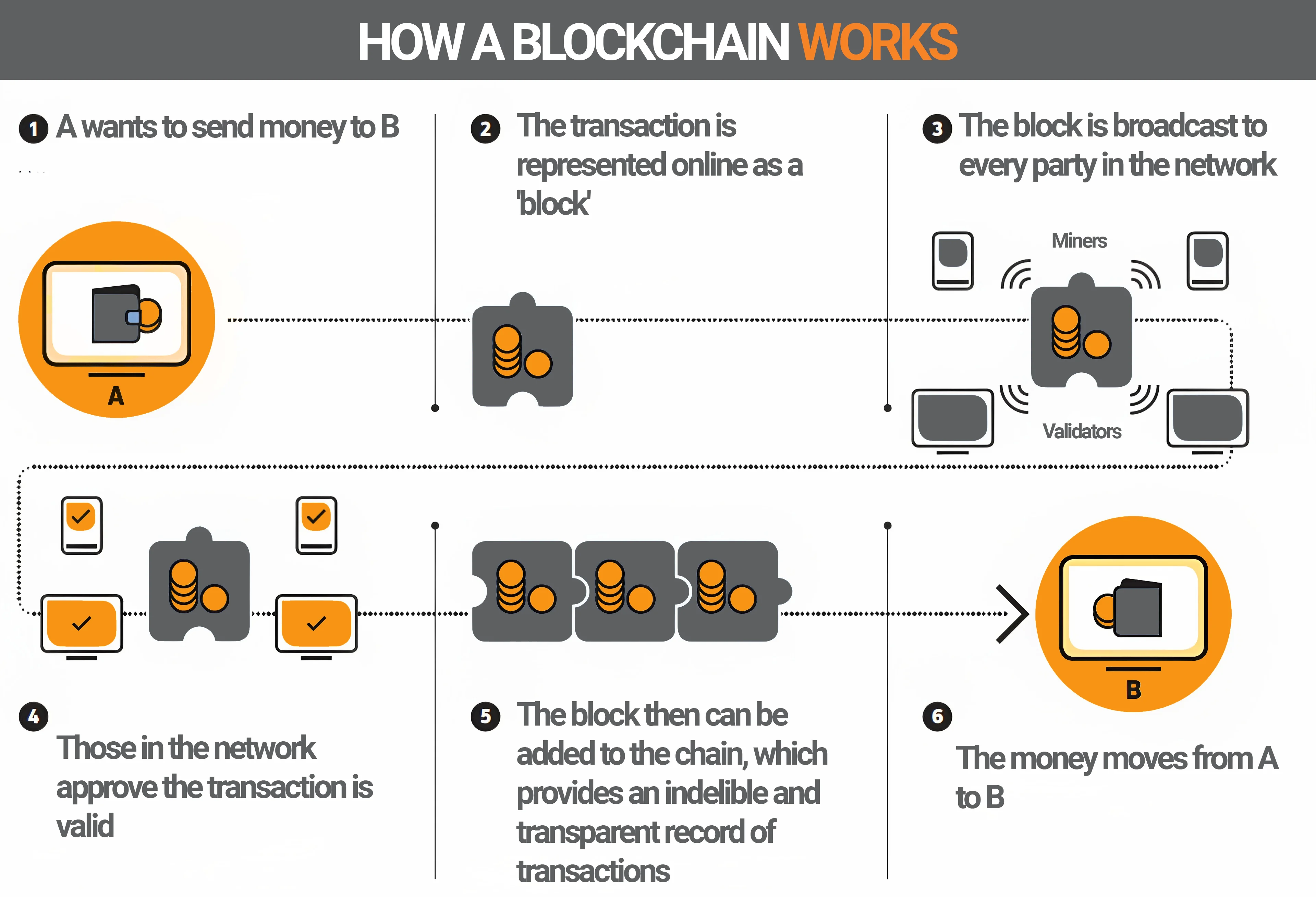
All purchases, sales and payments in cryptocurrency are stored in blocks of data linked to each other in a chain. This is the blockchain (see terms above). There is a network of people who use their computers to make sure everything is done right. These are miners.
For their work, miners receive new bitcoins. Each participant has a copy of the blockchain stored on their computer. Therefore, fakes are almost impossible.
Blockchain is a complex database, like a giant ledger of individual blocks of information. The trick is that information is shared and stored in a chain of interconnected blocks. This ensures its security and prevents unauthorized access.
The information recorded on the blockchain remains there forever. Nobody can change her.
Bitcoin is not the only thing that uses blockchain technology – many other cryptocurrencies use it as well. And various companies use the underlying technology for non-cryptocurrency purposes.
History
The inventor of BTC is Satoshi Nakamoto (pseudonym of an unknown software developer or development team). In view of the global economic crisis of 2007, he wanted to provide the world community with an independent transaction system that was cryptographically secure, verifiable and immutable.
The concept and open source software were published between 2008 and 2009 by an individual or group of individuals under the pseudonym Satoshi Nakamoto. It is still not clear who is behind this.
What is certain, however, is that Nakamoto released the first version of the Bitcoin Core reference implementation in 2009, thereby laying the foundation for Bitcoin, which was the first cryptocurrency in history.
The first goods paid for with Bitcoin were two pizzas in 2010 that cost 10,000 BTC. 10 years later, Bitcoin owners could buy a mega yacht or a private jet for the same amount.
Historical Price & Events
In 2009, the exchange rate of one Bitcoin was about one dollar. In November 2021, the value of the cryptocurrency exceeded $69,000, which is a record high.
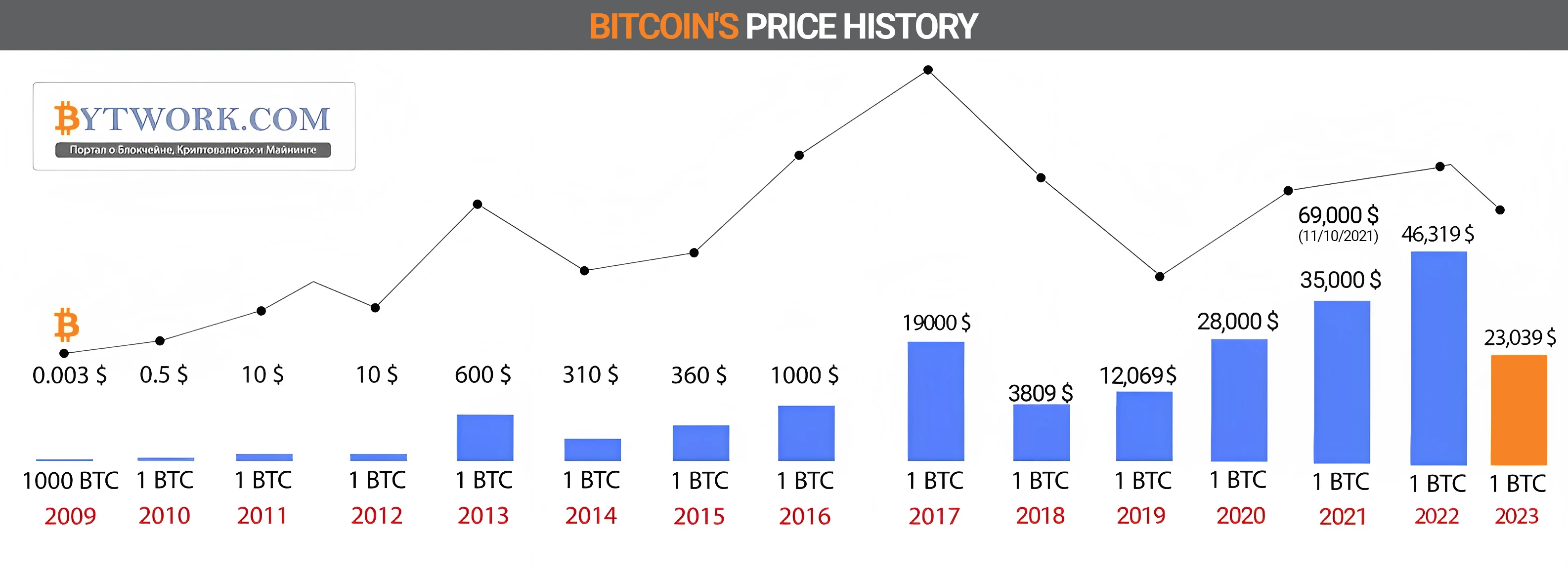
Price history: 2009 - 1$, 2021 - about $69,000, May 2022 - only $27,000.September 2022 - below $19,000.
Volatility means both big rewards and big risks for everyone who owns Bitcoin.
Why is there so much noise around Bitcoin?
The value of Bitcoin has skyrocketed in recent years. Only in the last five years, the cost has increased by about a hundred times.
Anyone who bought BTC with €100 in 2009 is now a multimillionaire. It awakens desires.
Recently, institutional investors and international corporations are increasingly investing part of their assets in Bitcoin. This led to a further increase in prices. But no one can say if this will continue.
The value of digital assets is subject to sharp fluctuations. Therefore, the savings you urgently need should never be invested in digital assets because the price risk is huge. BTC is not a safe investment.
Interesting Facts
- Bitcoin was launched in 2009 and hit its all-time high in 2021.
- 668 million transactions have already been made.
- The last coin will be mined in 2140.
- About 20% of bitcoins are lost forever. Users have lost their private keys to them.
- Private key
- is a secure code that allows its owner to conduct cryptocurrency transactions and confirm ownership of their property. Bitcoin keys contain a 256-bit string, displayed as a combination of letters and numbers.
- Buying a pizza was the first commercial bitcoin transaction.
- There are nearly 100,000 Bitcoin millionaires.
- Bitcoins can be bought and put into digital wallets.
- Bitcoin wallet
- The software is a digital wallet. This is where bitcoins are stored.
In practice, BTC is in the so-called wallet on a PC or mobile phone. They are protected by a very long password. Storing cryptocurrencies on your own device is called “cold storage”. This is the most secure storage method.
Online platforms or cryptocurrency exchanges also offer wallets linked to a user account. These are so-called “hot wallets”, which can be accessed using a computer or smartphone. This is the least secure storage method because the exchange can be hacked.
What does bitcoin look like?
Bitcoin has no coins or banknotes. Cryptocurrency exists only virtually, like a string of digital characters in a computer program.

Virtual currency is fundamentally different from currencies such as the euro or the dollar. Behind the latter are economic powers and central banks that provide security and stability. Bitcoin does not have this, which ensures that it is not tracked or protected.
Advantages
- Cryptocurrencies are available worldwide and operate independently of states.
- Blockchain technology is considered very secure.
- The basis is a decentralized database, a blockchain stored on several computers and managed jointly by the participants. All transactions are protected from forgery using cryptographic methods.
- Unlike classic money, the new coins are notare issued and not controlled by a central authority such as a central bank, but are created and managed decentralized through cryptographic computing on the network.
- Unlike classical currencies such as dollars or euros, an unlimited amount of BTC cannot be created. There is a limit of 21 million. Most of the coins have already been created.
In addition, the internet currency is considered to be inflation resistant as its absolute amount is capped at 21 million. This was also the goal of the inventor Satoshi Nakamoto (pseudonym for an unknown software developer or software development team).
In view of the global economic crisis of 2007, the creator wanted to provide the world community with an independent transaction system that would be cryptographically secure, verifiable and immutable.
Safety
Payment transactions are carried out and protected using the blockchain. This means that other participants in the Bitcoin network are of central importance. Many other computers on the network participate in the payment transaction, making the encryption very secure from manipulation. For providing computing power, the rest of the participants again receive bitcoins - this is how new bitcoins are created.
Criticism
Volatility
The price of bitcoin is considered unstable, volatile2. This means that it is subject to strong fluctuations.
The price of bitcoin fluctuates much more than stock prices. In November 2021, one bitcoin was worth $69,000, in May 2022 it dropped to $27,000. This is a difference of more than 50 percent.
Bitcoin is a digital currency, there is no real value behind it, as, for example, is the case with gold. In addition, BTC is not a national currency.
Shadow market
Critics believe that criminogenic elements use bitcoin to trade drugs or weapons. Hackers blackmail companies by shutting down computer systems and demanding a ransom in bitcoin. You can buy bitcoins anonymously. This is why digital currency has always been so popular among criminals.
However, following this logic, cash is also used to trade in drugs or weapons. This does not mean that cash should be banned.
High risks
Bitcoin has a reputation for being a non-transparent object of speculation, rather than a convenient, independent, and widespread means of payment. Some people have become very rich because of this - in fiat money like euros and dollars - others have lost a lot of money.
If law abiding citizens want to use Bitcoin, this is not possible anonymously due to government regulations, and a normal bank account is usually required, so Bitcoin is not independent of banks and governments.
Other disadvantages
- As a result of hacker attacks on large crypto platforms, amounts of several million euros have disappeared.
- Cryptographic verification of transactions in the blockchain and the creation of new coins require gigantic power consumption.
- It is estimated that the global bitcoin network consumes as much electricity as Sweden in 2022.
- If you lose the private key to your virtual wallet, then digital money will be lost.
- Future hacker attacks cannot be completely ruled out.
- There are no contracts and legal guarantees.
- If the Internet collapsed, then the digital currency could no longer be used.

